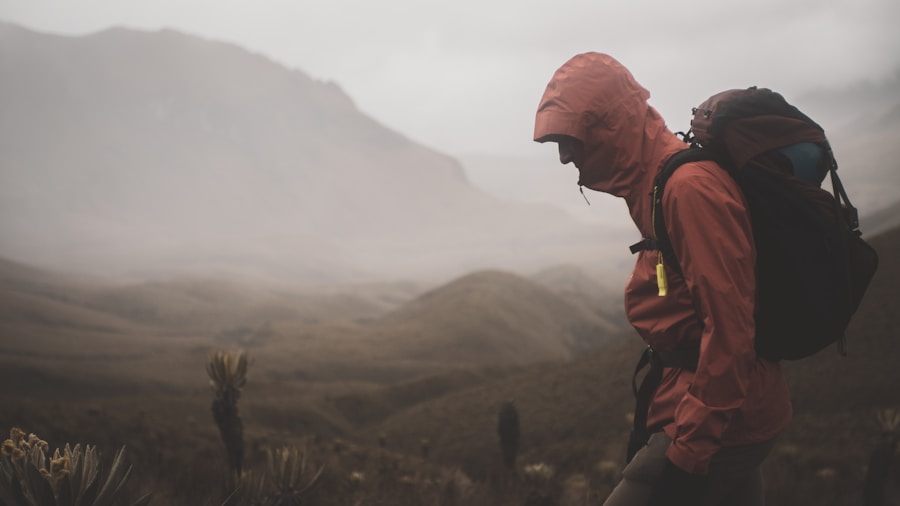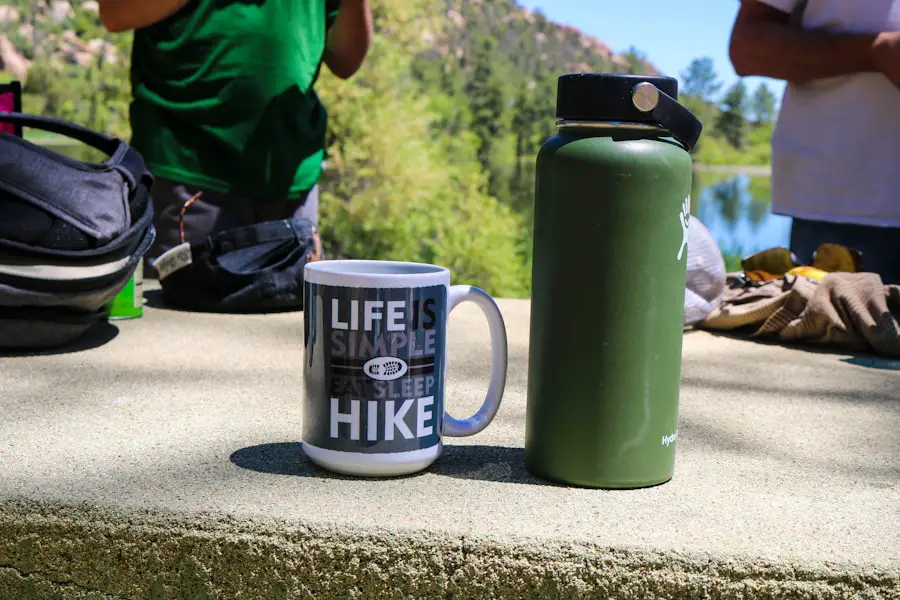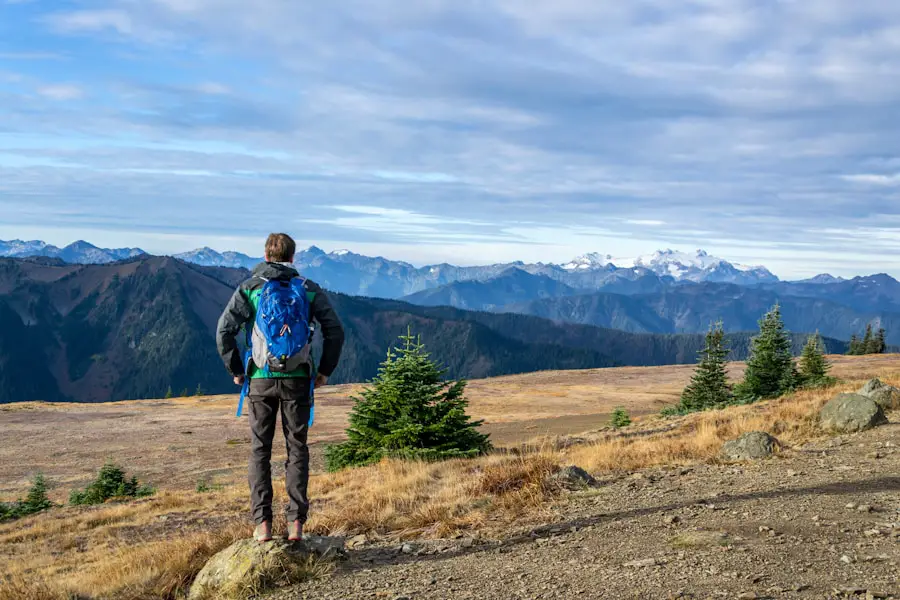High elevation hiking presents a unique set of challenges and rewards that distinguish it from hiking at lower altitudes. Generally defined as hiking at elevations above 8,000 feet (2,400 meters), high elevation hiking exposes adventurers to thinner air, which can significantly affect physical performance and overall well-being. The atmospheric pressure decreases as one ascends, leading to a reduction in the amount of oxygen available for breathing.
This phenomenon can result in altitude sickness, a condition that can manifest in symptoms ranging from headaches and nausea to more severe complications if not addressed promptly. The allure of high elevation hiking lies not only in the breathtaking vistas and the sense of accomplishment that comes with conquering challenging terrains but also in the unique ecosystems that thrive in these environments. Alpine flora and fauna exhibit remarkable adaptations to survive in harsh conditions, offering hikers a chance to witness nature’s resilience.
The stark beauty of rugged mountains, glacial lakes, and expansive vistas can be profoundly inspiring, drawing hikers from all walks of life to explore these elevated landscapes. However, understanding the intricacies of high elevation hiking is crucial for ensuring a safe and enjoyable experience.
Key Takeaways
- High elevation hiking requires understanding the potential risks and challenges associated with altitude sickness and reduced oxygen levels.
- Physical preparation for high elevation hiking should include cardiovascular and strength training, as well as gradually increasing elevation gain in training hikes.
- Proper gear and equipment for high elevation hiking includes breathable and moisture-wicking clothing, sturdy hiking boots, trekking poles, and a well-fitted backpack.
- Nutrition and hydration for high elevation hiking should focus on consuming enough calories, staying hydrated, and replenishing electrolytes to combat the effects of altitude.
- Acclimatization techniques for high elevation hiking include gradual ascent, staying hydrated, and taking rest days to allow the body to adjust to the altitude.
Physical Preparation for High Elevation Hiking
Preparing physically for high elevation hiking is essential for maximizing performance and minimizing the risk of altitude-related illnesses. A well-rounded fitness regimen should include cardiovascular training, strength building, and flexibility exercises. Cardiovascular fitness is particularly important, as it enhances the body’s ability to utilize oxygen efficiently.
Activities such as running, cycling, or swimming can improve aerobic capacity, which is vital when tackling steep ascents and prolonged exertion at high altitudes. In addition to cardiovascular training, strength training plays a pivotal role in preparing the body for the demands of high elevation hiking. Focusing on core strength, leg muscles, and overall stability can help hikers navigate uneven terrain and carry heavy packs more effectively.
Exercises such as squats, lunges, and deadlifts can build the necessary muscle groups while also improving balance and coordination. Flexibility exercises, including yoga or dynamic stretching routines, can enhance range of motion and reduce the risk of injury during hikes.
Gear and Equipment for High Elevation Hiking

Selecting the right gear and equipment is paramount for a successful high elevation hiking experience. The first consideration should be footwear; sturdy, well-fitting hiking boots with good ankle support are essential for navigating rocky trails and preventing injuries. Waterproof options are advisable, as weather conditions can change rapidly in mountainous regions.
Additionally, investing in moisture-wicking socks can help prevent blisters and keep feet dry during long treks. Clothing choices are equally important when preparing for high elevation hikes. Layering is key to adapting to fluctuating temperatures and varying levels of exertion.
A moisture-wicking base layer helps regulate body temperature by drawing sweat away from the skin, while an insulating mid-layer provides warmth during colder moments. An outer shell that is both waterproof and breathable protects against wind and rain while allowing moisture to escape. Accessories such as hats, gloves, and sunglasses are also crucial for shielding against sun exposure and cold winds.
Nutrition and Hydration for High Elevation Hiking
| Metrics | Recommendation |
|---|---|
| Water Intake | Drink at least 3-4 liters of water per day to stay hydrated at high elevation. |
| Caloric Intake | Consume high-energy foods such as nuts, dried fruits, and energy bars to maintain energy levels. |
| Electrolyte Balance | Ensure adequate intake of electrolytes through sports drinks or electrolyte tablets to prevent dehydration and muscle cramps. |
| Protein Intake | Consume protein-rich foods such as lean meats, beans, and dairy products to support muscle recovery and repair. |
| Vitamin and Mineral Supplementation | Consider taking supplements such as vitamin C, vitamin D, and iron to support immune function and prevent altitude sickness. |
Proper nutrition and hydration are critical components of preparing for high elevation hiking. At higher altitudes, the body requires more energy to function effectively due to increased exertion levels and the challenges posed by lower oxygen availability. A balanced diet rich in carbohydrates, proteins, and healthy fats is essential for fueling long hikes.
Carbohydrates provide quick energy sources, while proteins aid in muscle recovery and repair. Foods such as whole grains, nuts, dried fruits, and energy bars are excellent choices for on-the-go snacking. Hydration is equally vital when hiking at high elevations.
The dry air at altitude can lead to increased fluid loss through respiration and perspiration, making it easy to become dehydrated without realizing it. Hikers should aim to drink water regularly throughout their trek rather than waiting until they feel thirsty. Electrolyte-rich drinks can also be beneficial in replenishing lost minerals during strenuous activities.
Carrying a reliable water filtration system or purification tablets is advisable when accessing natural water sources along the trail.
Acclimatization Techniques for High Elevation Hiking
Acclimatization is a critical process that allows the body to adjust to reduced oxygen levels at high elevations. Gradual ascent is one of the most effective acclimatization techniques; hikers should aim to increase their elevation slowly over several days rather than making rapid gains. This approach gives the body time to produce more red blood cells, which are responsible for transporting oxygen throughout the bloodstream.
In addition to gradual ascent, spending extra time at intermediate elevations can further aid acclimatization. For instance, if planning to hike a peak that reaches 14,000 feet (4,267 meters), spending a night or two at a base camp around 10,000 feet (3,048 meters) allows the body to adapt before tackling higher altitudes. Engaging in light physical activity during this acclimatization period can also help stimulate circulation without overexerting oneself.
Safety Considerations for High Elevation Hiking

Safety should always be a top priority when embarking on high elevation hikes. One of the most significant risks hikers face is altitude sickness, which can occur when ascending too quickly without proper acclimatization. Symptoms may include headache, dizziness, nausea, and fatigue.
If these symptoms arise, it is crucial to descend to a lower elevation immediately and seek medical attention if necessary. Weather conditions at high elevations can change rapidly and dramatically impact safety. Hikers should always check weather forecasts before setting out and be prepared for sudden storms or temperature drops.
Carrying essential safety gear such as a map, compass or GPS device, first aid kit, and emergency shelter can be lifesaving in unexpected situations. Additionally, informing someone about your hiking plans and expected return time adds an extra layer of safety.
Mental Preparation for High Elevation Hiking
Mental preparation is often overlooked but is just as important as physical readiness when it comes to high elevation hiking. The mental challenges posed by steep ascents, unpredictable weather conditions, and physical fatigue can be daunting. Developing a positive mindset through visualization techniques can help hikers mentally prepare for the challenges ahead.
Imagining oneself successfully navigating difficult sections of the trail can boost confidence and reduce anxiety. Moreover, practicing mindfulness techniques can enhance focus during hikes. Being present in the moment allows hikers to appreciate their surroundings while also staying attuned to their physical state.
Techniques such as deep breathing or meditation can help manage stress levels and maintain motivation throughout the journey. Setting realistic goals for each hike can also contribute to a positive mental outlook; breaking down larger objectives into smaller milestones makes the overall challenge feel more manageable.
Environmental Considerations for High Elevation Hiking
High elevation environments are often fragile ecosystems that require careful stewardship from those who venture into them. Hikers must be aware of their impact on these delicate landscapes and take steps to minimize their footprint. Following Leave No Trace principles is essential; this includes packing out all trash, staying on designated trails to prevent soil erosion, and avoiding disturbing wildlife habitats.
Additionally, understanding local regulations regarding campfires, waste disposal, and wildlife interactions is crucial for preserving these natural areas for future generations. Many high elevation trails are located within national parks or protected areas where specific guidelines are enforced to protect both visitors and the environment. By respecting these regulations and practicing responsible hiking habits, adventurers can contribute positively to the preservation of high elevation ecosystems while enjoying their outdoor experiences.
If you’re planning a high elevation hiking trip, it’s important to be prepared for the challenges that come with it. One helpful article to check out is 5 Best Travel Trailer Batteries to Power Your Spring Adventures in 2025. This article provides valuable information on how to ensure you have the necessary power supply for your outdoor adventures, which can be crucial when hiking in remote areas with high elevations.
Love travel? Join Our Facebook Community For More Tips.
FAQs
What is considered high elevation hiking?
High elevation hiking typically refers to hiking at altitudes of 8,000 feet (2,438 meters) or higher. At these elevations, the air is thinner and the body may experience symptoms of altitude sickness.
How can I prepare for high elevation hiking?
To prepare for high elevation hiking, it is important to gradually acclimate to higher altitudes, stay hydrated, and maintain a good level of physical fitness. It is also helpful to pack appropriate gear and clothing for the conditions.
What are the symptoms of altitude sickness?
Symptoms of altitude sickness can include headache, nausea, dizziness, fatigue, and difficulty sleeping. In severe cases, altitude sickness can lead to high altitude pulmonary edema (HAPE) or high altitude cerebral edema (HACE), which can be life-threatening.
How can I acclimate to high elevation before hiking?
To acclimate to high elevation before hiking, it is recommended to spend a few days at a moderate altitude before ascending to higher elevations. This allows the body to gradually adjust to the decrease in oxygen levels.
What should I pack for a high elevation hike?
When preparing for a high elevation hike, it is important to pack plenty of water, high-energy snacks, sunscreen, a hat, layers of clothing, a first aid kit, and navigation tools. It is also important to pack gear for potential changes in weather conditions.
